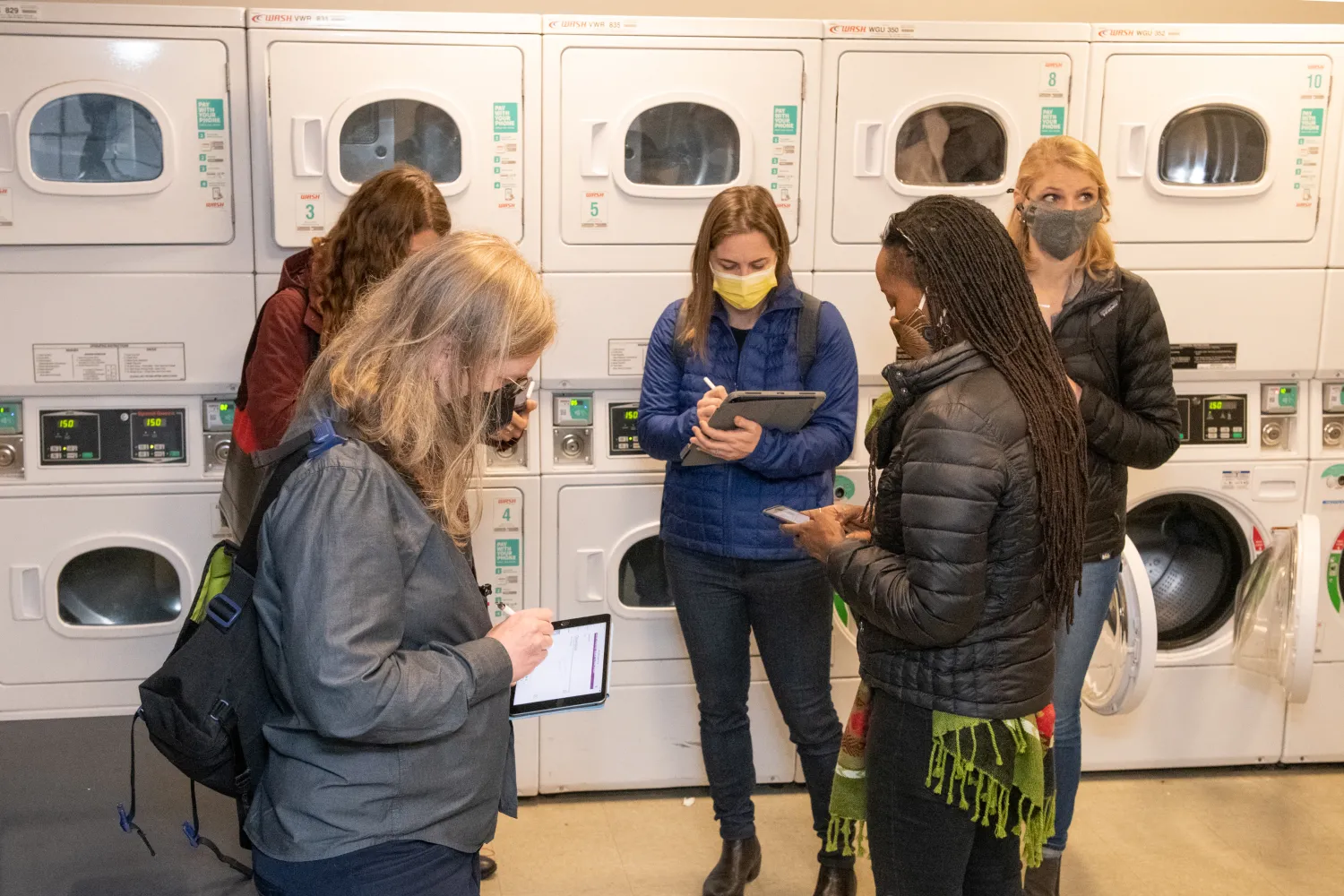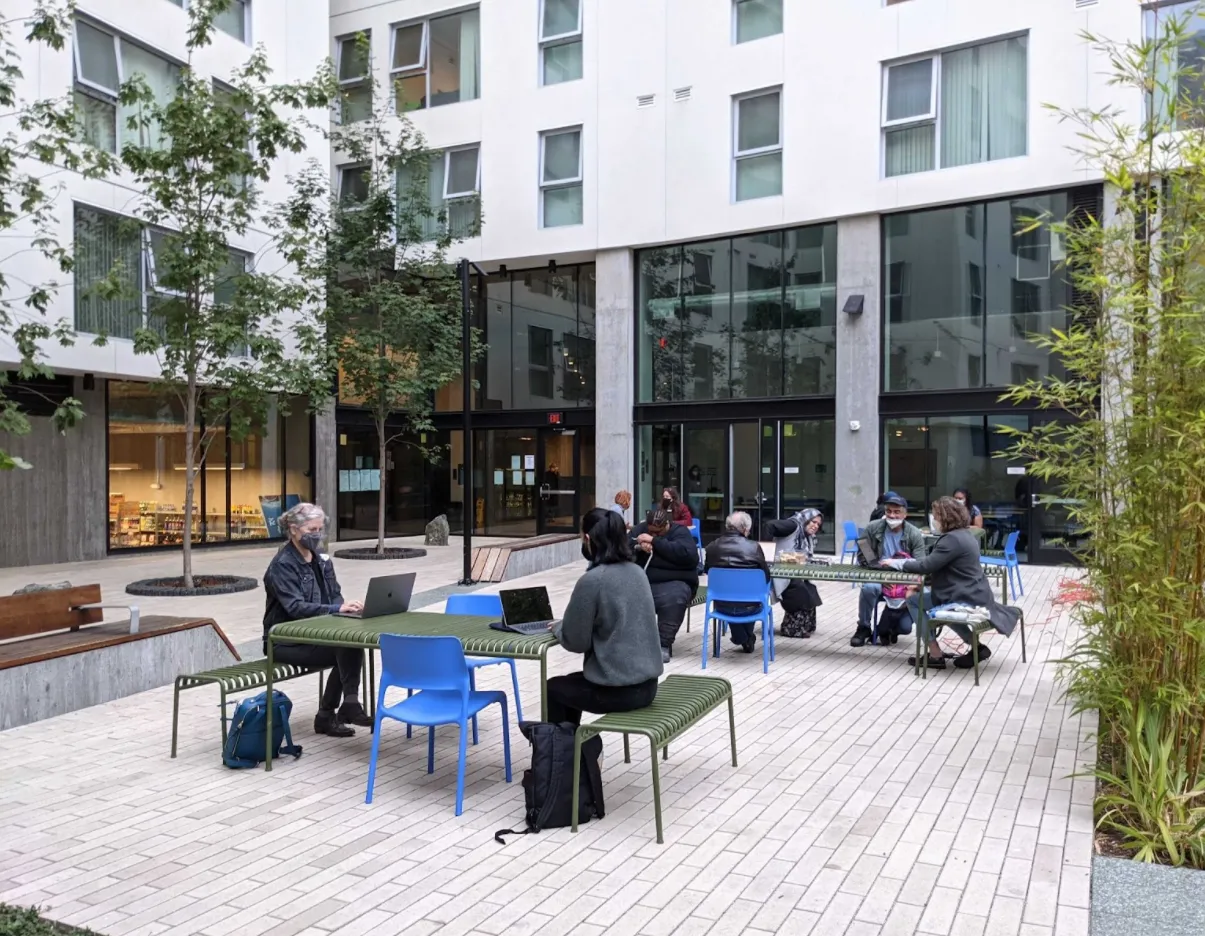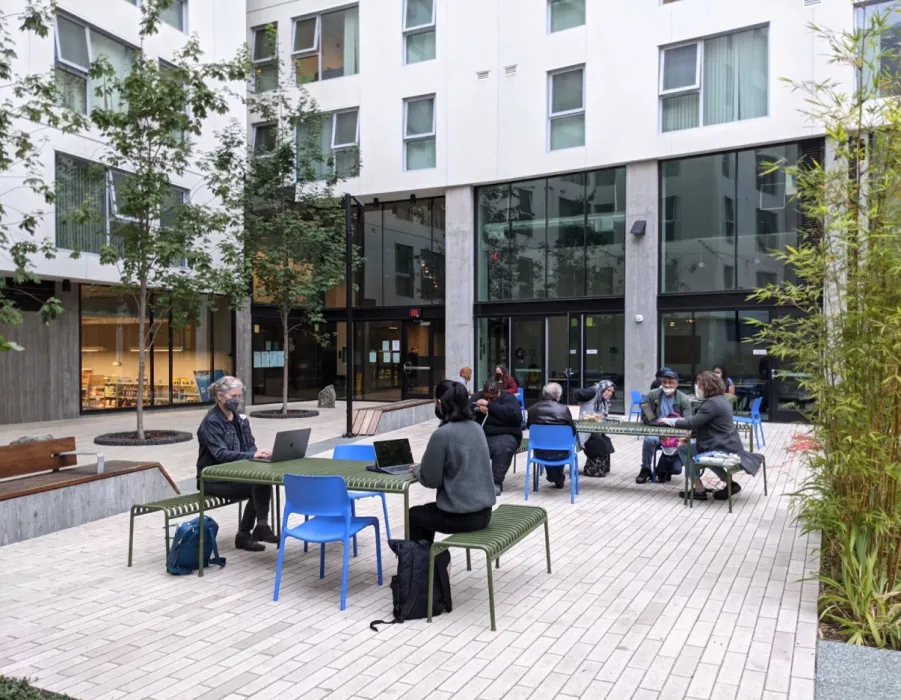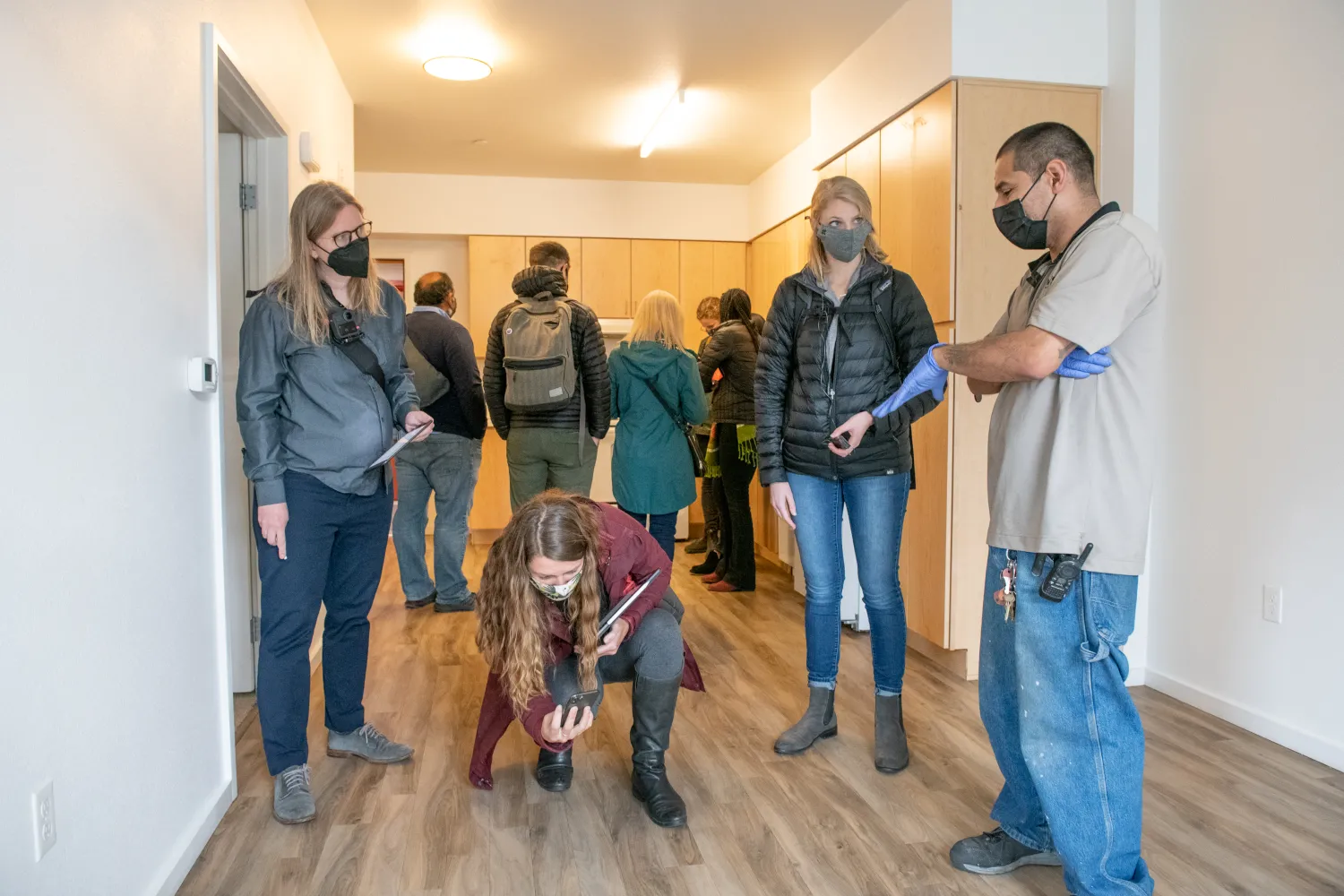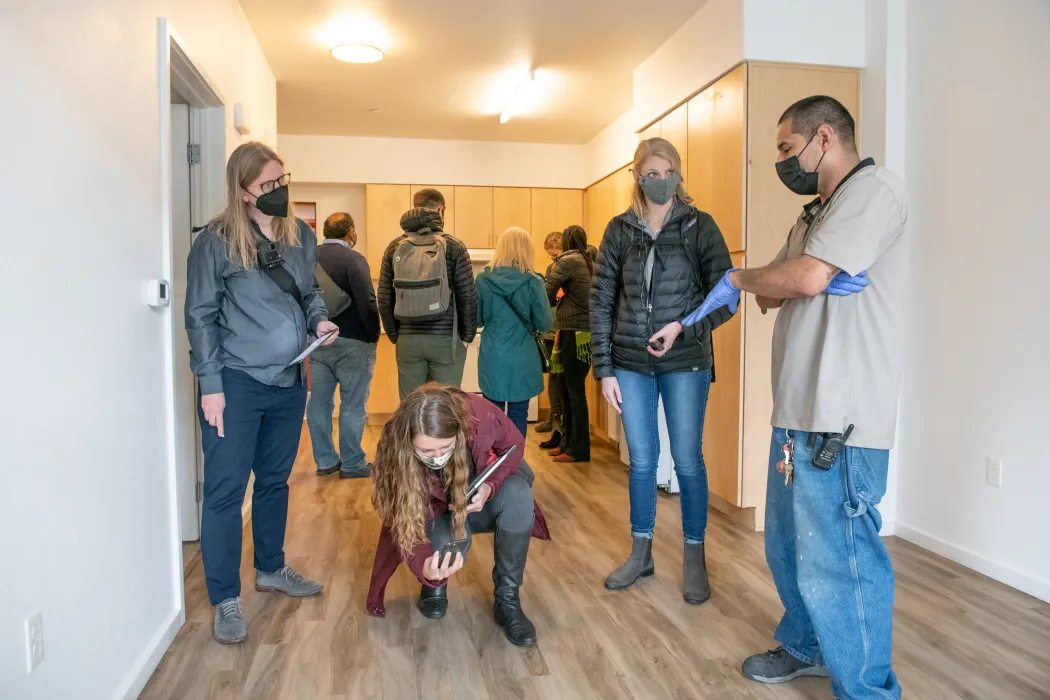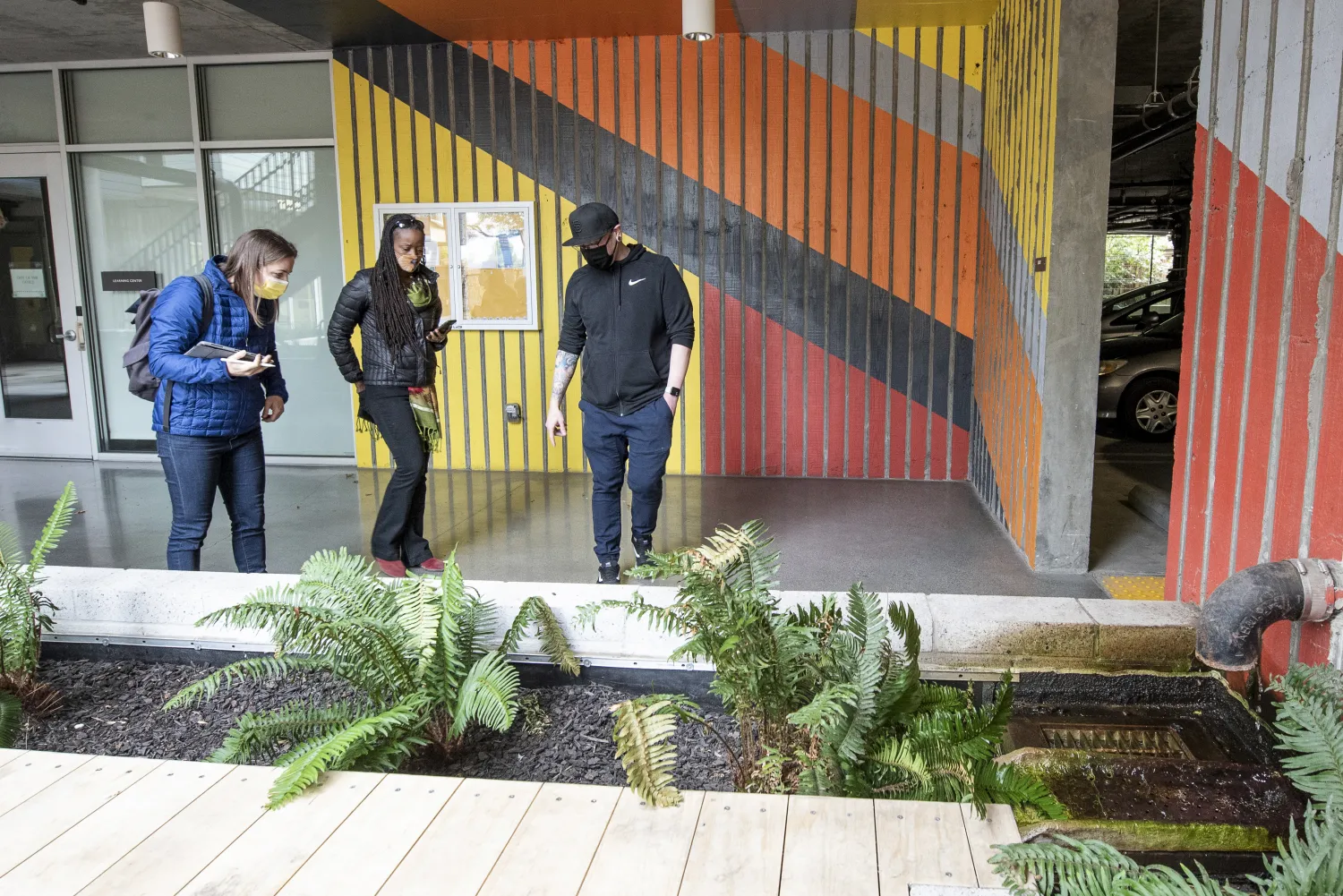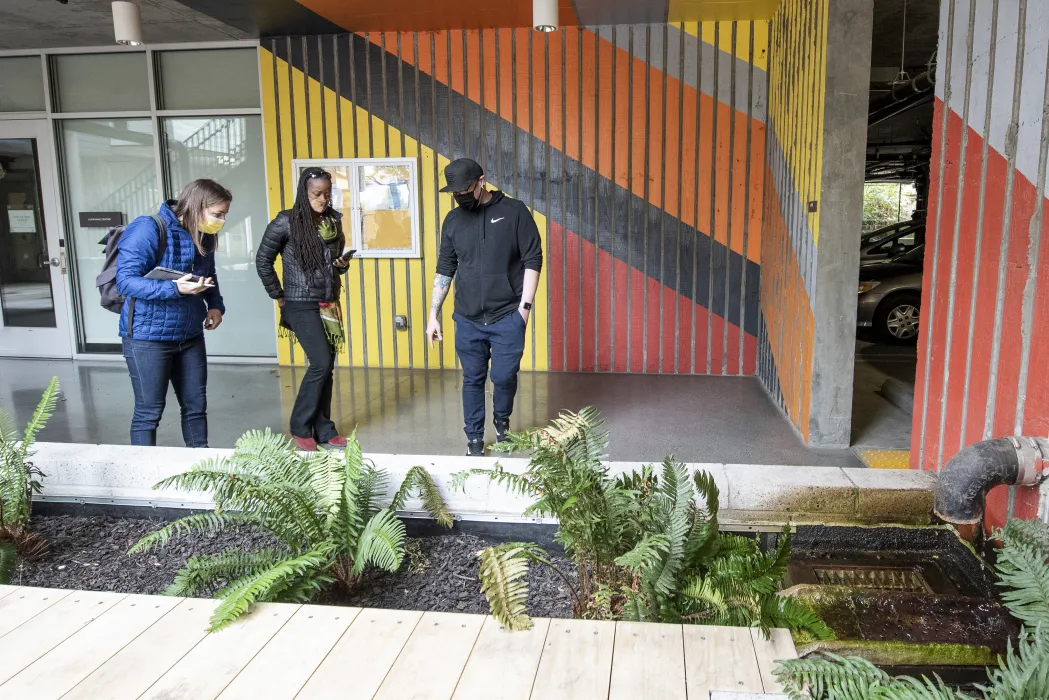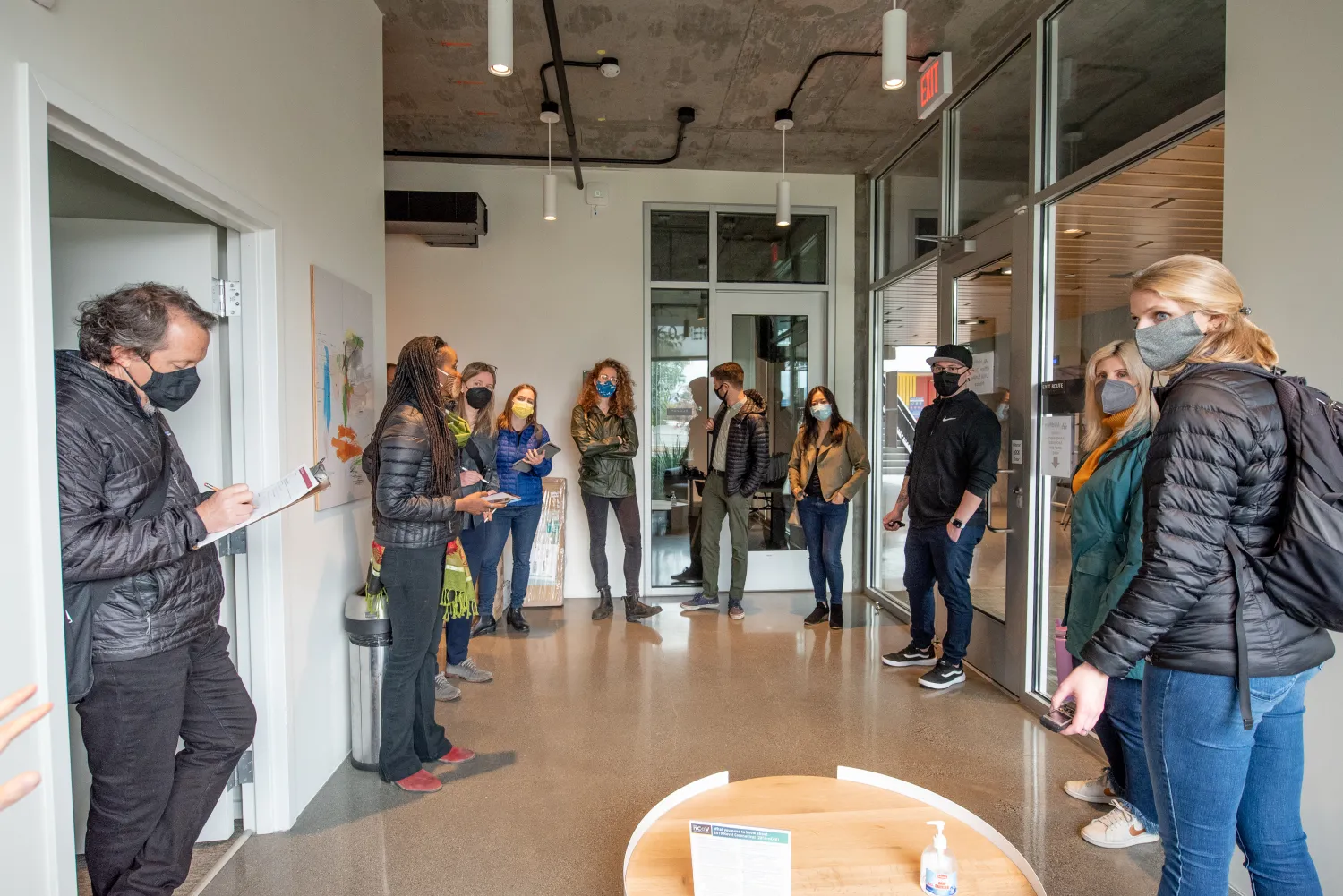
Post Occupancy Evaluation (POE) involves the systematic evaluation of buildings in use, often and ideally from the perspective of the people who use them. It assesses how well buildings match users' needs and identifies ways to improve building design, performance and fitness for purpose.
What is the DBA POE toolkit?
DBA has developed a suite of evaluation templates and tools in collaboration with a number of our non-profit clients, with varying budgets and objectives. Below are the tools we can offer. Because POE can involve a combination of subjective/empirical and qualitative/quantitative data, it is best when multiple modes of analysis are used.
Staff Questionnaire. We developed an online staff questionnaire that can be useful if you're interested in some user feedback across many buildings in a portfolio quickly, without involving residents. The downside is that often 1-2 voices represent the experience for an entire building. With enough buildings, you may be able to compare perceptions and this can give you some clues about what to focus on. This survey helps us, because we start to see common themes emerge across buildings (we currently have input from staff representing 17 buildings)
Shared Evaluation Walk. We find this simple matrix helpful to capture things that might otherwise fall through the cracks. We typically compile notes into a quick-and-dirty slide deck to document observations, or we can spend a little more time on a more formal report. If there is a staff survey, it can be helpful for the survey to come first, so that the site walk can target issues brought up in the survey.
Shared Evaluation Walk Introduction
Shared Evaluation Walk Notes Template
Shared Evaluation Walk Report Template
Resident questionnaires. This can take many forms depending on the team’s objectives. We have paired questionnaires with in-unit environmental measurements, to help answer questions about comfort, behavior, and air quality. More commonly, a questionnaire is delivered in a focus group setting where perceptions about various, general aspects of the building can be collected. These are extremely hard to design and a couple months should be allowed to decide on the right questions, ideally do a beta-test/mock survey, and devise a plan for delivery and translation.
IEQ measurement tools. We have our own Temp/RH/CO2 dataloggers, particulate counters, and spot measurement tools (temp, RH, illuminance, radiant surface temp) to help study specific IEQ questions.
Utility data collection. If clients are willing to share data for our buildings, we have Wegowise and Portfolio Manager Accounts and can help interpret the data.
Final Reports
